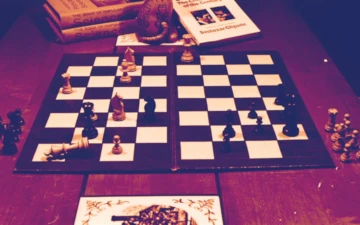
What is the arabian mate?
The arabian mate is a chess checkmate pattern that is named after the chess variant Shatranj, which was played in the Arab world during the medieval period. The pattern involves a combination of a knight and a bishop attacking the enemy king, typically against a king that is trapped in the corner of the board. It is considered a classic tactic in shatranj and other chess variants played in the Arab world.
What is the history of the arabian mate?
The history of arabian mate can be traced back to the medieval period of chess, where the game was still evolving and new tactics were being developed. In Shatranj, the knight and bishop were considered the strongest pieces on the board, and the arabian mate pattern was a common tactic used by players. The pattern was also used in other variants of chess that were played in the Arab world, such as Tamerlane chess and Chaturanga.
How to execute the arabian mate?
The key to successfully executing the arabian mate is coordination between the knight and the bishop. The knight is responsible for attacking the enemy king and creating a mating threat, while the bishop is responsible for supporting the knight and attacking the enemy’s defensive pieces. The knight and bishop work together to create a powerful attacking force that can quickly overwhelm the enemy’s defenses.
How to set up the arabian mate?
To set up the arabian mate, the knight and the bishop should be placed on the same diagonal, with the knight attacking the enemy king and the bishop attacking the enemy’s defensive pieces. This setup creates a strong attacking force that is difficult for the enemy to defend against. It is important to note that the king should be in a corner of the board as it makes it more difficult to escape.